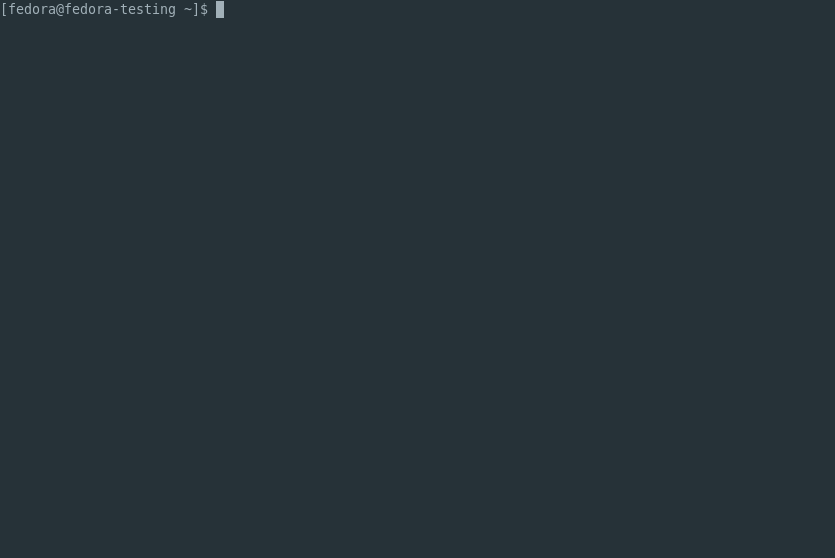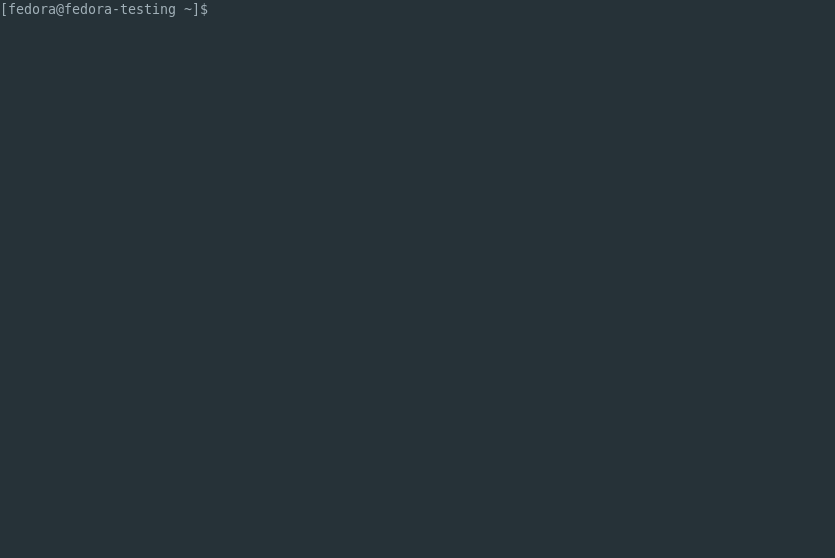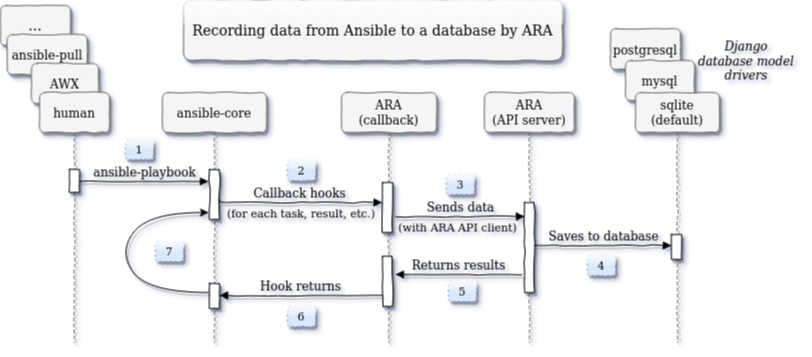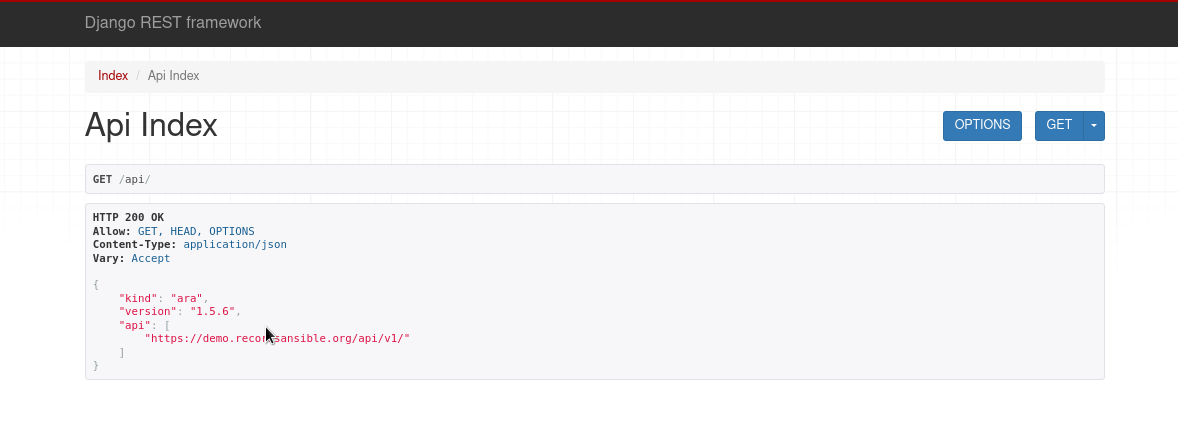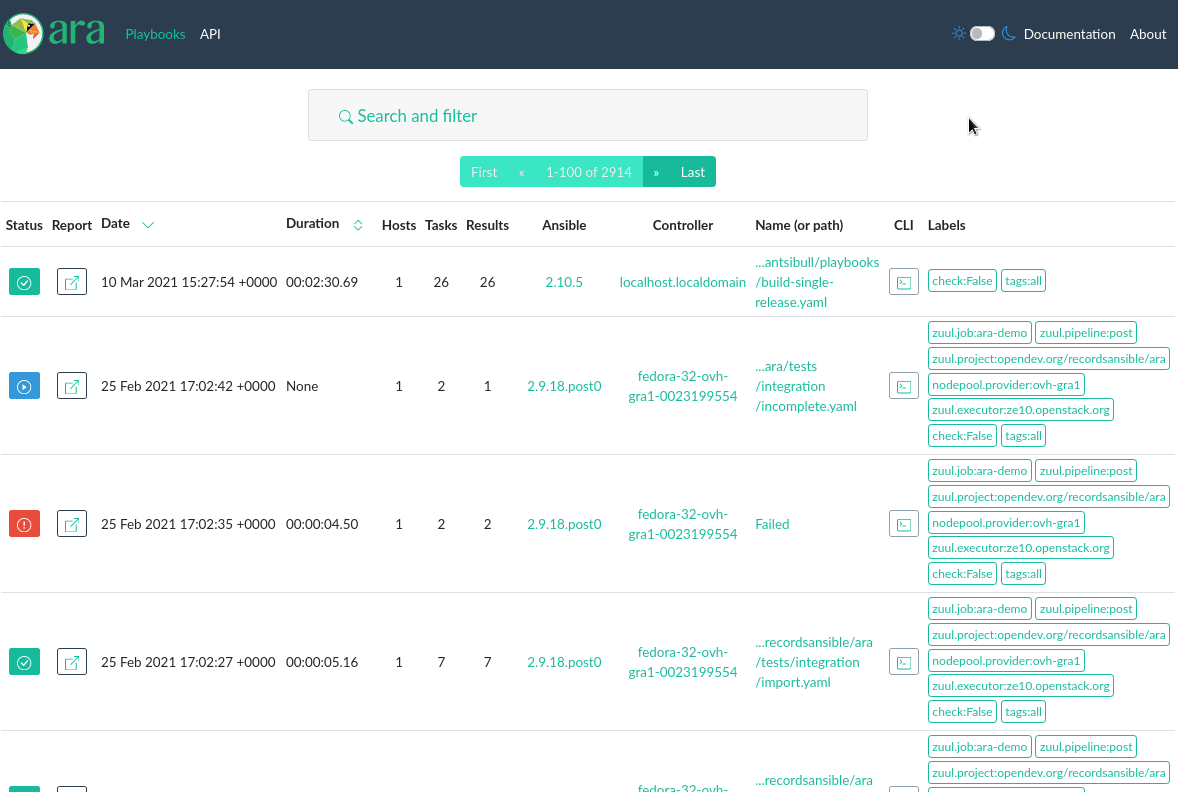ARA Records Ansible and makes it easier to understand and troubleshoot.
It's another recursive acronym.
Simple to install and get started, ara provides reporting by saving detailed and granular results of ansible and ansible-playbook commands wherever you run them:
- by hand or from a script
- from a laptop, a desktop, a container or a server
- for development, CI or production
- from a linux distribution or even on OS X (as long as you have
python >= 3.5) - from tools such as AWX or Tower, Jenkins, GitLab CI, Rundeck, Zuul, Molecule, ansible-pull, ansible-test or ansible-runner
By default, ara's Ansible callback plugin will record data to a local sqlite database without requiring you to run a server or a service:
ara can also provide a single pane of glass when recording data from multiple locations by pointing the callback plugin to a running API server:
The data is then made available for browsing, searching and querying over the included reporting interface, a CLI client as well as a REST API.
ARA Records Ansible execution results to sqlite, mysql or postgresql databases by using an Ansible callback plugin.
This callback plugin leverages built-in python API clients to send data to a REST API server:
Included by the API server with django-rest-framework, the API browser allows users to navigate the different API endpoints and query recorded data.
A simple reporting interface built-in to the API server without any extra dependencies.
A built-in CLI client for querying and managing playbooks and their recorded data.
The full list of commands, their arguments as well as examples can be found in the CLI documentation.
- Any recent Linux distribution or Mac OS with python >=3.5 available
- The ara Ansible plugins must be installed for the same python interpreter as Ansible itself
For RHEL 7 and CentOS 7 it is recommended to run the API server in a container due to missing or outdated dependencies. See this issue for more information.
With defaults and using a local sqlite database:
# Install Ansible and ARA (with API server dependencies) for the current user
python3 -m pip install --user ansible "ara[server]"
# Configure Ansible to use the ARA callback plugin
export ANSIBLE_CALLBACK_PLUGINS="$(python3 -m ara.setup.callback_plugins)"
# Run an Ansible playbook
ansible-playbook playbook.yaml
# Use the CLI to see recorded playbooks
ara playbook list
# Start the built-in development server to browse recorded results
ara-manage runserverYou can get an API server deployed using the ara Ansible collection or get started quickly using the container images from DockerHub and quay.io:
# Create a directory for a volume to store settings and a sqlite database
mkdir -p ~/.ara/server
# Start an API server with podman from the image on DockerHub:
podman run --name api-server --detach --tty \
--volume ~/.ara/server:/opt/ara:z -p 8000:8000 \
docker.io/recordsansible/ara-api:latest
# or with docker from the image on quay.io:
docker run --name api-server --detach --tty \
--volume ~/.ara/server:/opt/ara:z -p 8000:8000 \
quay.io/recordsansible/ara-api:latestOnce the server is running, ara's Ansible callback plugin must be installed and configured to send data to it:
# Install Ansible and ARA (without API server dependencies) for the current user
python3 -m pip install --user ansible ara
# Configure Ansible to use the ARA callback plugin
export ANSIBLE_CALLBACK_PLUGINS="$(python3 -m ara.setup.callback_plugins)"
# Set up the ARA callback to know where the API server is located
export ARA_API_CLIENT="http"
export ARA_API_SERVER="http://127.0.0.1:8000"
# Run an Ansible playbook
ansible-playbook playbook.yaml
# Use the CLI to see recorded playbooks
ara playbook listData will be available on the API server in real time as the playbook progresses and completes.
You can read more about how container images are built and how to run them in the documentation.
A live demo is deployed with the ara Ansible collection from Ansible galaxy.
It is available at https://demo.recordsansible.org.
Documentation for installing, configuring, running and using ARA is available on readthedocs.io.
- Bugs, issues and enhancements: https://github.com/ansible-community/ara/issues
- IRC: #ara on Libera.chat
- Slack: https://arecordsansible.slack.com (invitation link)
- Website and blog: https://ara.recordsansible.org
- Twitter: https://twitter.com/recordsansible
Contributions to the project are welcome and appreciated !
Get started with the contributor's documentation.
Contributors to the project can be viewed on GitHub.
Copyright (c) 2021 The ARA Records Ansible authors ARA Records Ansible is free software: you can redistribute it and/or modify it under the terms of the GNU General Public License as published by the Free Software Foundation, either version 3 of the License, or (at your option) any later version. ARA Records Ansible is distributed in the hope that it will be useful, but WITHOUT ANY WARRANTY; without even the implied warranty of MERCHANTABILITY or FITNESS FOR A PARTICULAR PURPOSE. See the GNU General Public License for more details. You should have received a copy of the GNU General Public License along with ARA Records Ansible. If not, see <http://www.gnu.org/licenses/>.
